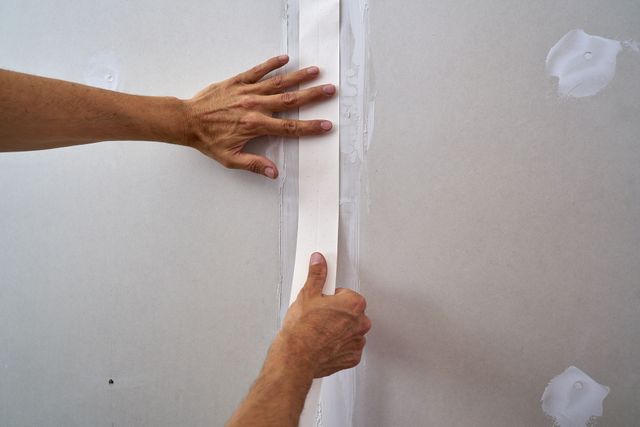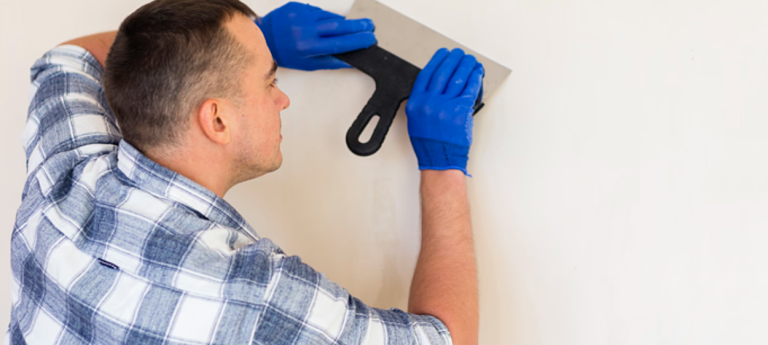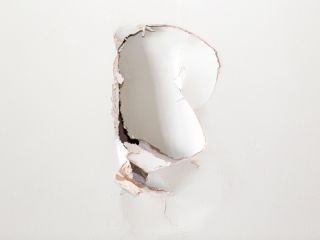Discover the Ideal Practices for Effective Drywall Fixing and Installation
The art of drywall repair and installation needs a blend of skill and precision. Grasping the necessary devices is necessary for attaining a smooth coating. Recognizing the detailed procedure can make a considerable distinction in the last outcome. Appropriate strategies for taping and mudding are likewise critical. What remains is the expertise of maintenance that assures long life. These elements together produce a sleek outcome worth exploring even more.

Crucial Devices for Drywall Repair and Installment
When embarking on drywall repair work and setup, having the right tools can significantly enhance the effectiveness and high quality of the job. An utility blade is necessary for reducing drywall sheets precisely, while a drywall saw can aid in making much more detailed cuts. Taping knives, available in numerous sizes, are vital for applying joint substance smoothly and equally. A drywall sander, preferably with a dust collection attribute, helps achieve a polished coating, lowering the need for substantial cleaning.
Furthermore, a measuring tape warranties precise measurements, and a level ensures that setups are straight and plumb. Safety equipment, consisting of dust masks and safety glasses, need to not be ignored to safeguard versus particles and dirt. Ultimately, a stud finder aids in locating mounting participants, ensuring safe and secure installment. By furnishing oneself with these important devices, the repair and installment procedure comes to be extra manageable and results in a professional-quality outcome.

Step-by-Step Guide to Patching Holes
Patching holes in drywall requires a systematic method to guarantee a seamless repair. First, the area around the hole should be cleansed and any type of loosened particles eliminated. For small openings, a putty blade can be used to apply a light-weight spackle, pushing it right into the hole and smoothing the surface. After it dries, fining sand is necessary to develop a flat surface. For bigger holes, a spot of drywall may be essential. This involves cutting a piece of drywall somewhat bigger than the hole, securing it to the wall surface with screws, and using joint substance to cover the seams. As soon as the substance dries, it must be sanded smooth. Ultimately, keying the patched location before paint will guarantee an also finish. Adhering to these steps will certainly lead to a professional-looking repair work that mixes flawlessly with the bordering wall.
Strategies for Seamless Drywall Setup
Achieving smooth drywall installment demands cautious planning and implementation. It is essential to measure and cut drywall sheets precisely to lessen voids. Making use of an energy blade, installers need to rack up the board prior to breaking it along the cut line, guaranteeing clean edges. Correctly aligning the sheets is important; beginning with the top and working down helps maintain uniformity.
Fastening drywall to the studs requires consistent spacing, normally every 16 inches, making use of screws instead of nails for better hold. This technique reduces the threat of pops over time. In addition, startling the joints between sheets boosts architectural integrity and reduces the presence of joints.
Finally, making use of the appropriate density of drywall for particular areas-- such as moisture-resistant key ins bathrooms-- more adds to a perfect finish. Following these strategies will certainly result in a smooth and professional-looking installation, establishing the stage for the subsequent finishing procedures.
Completing Touches: Insulation and Mudding
Completing touches, such as mudding and taping, play an essential role in attaining a sleek drywall surface. Taping entails using a slim strip of drywall tape over the joints and seams, making certain a smooth appearance. This process aids stop fractures and creates a strong bond in between drywall sheets. It is crucial to choose the right kind of tape, with paper and fiberglass harmonize being the most common alternatives.
Mudding, or applying joint compound, complies with taping. This compound loads in voids and ravel the surface area for a consistent surface. It is normally applied in numerous layers, with each coat requiring to dry prior to fining sand. Appropriate technique includes feathering the sides to mix the compound into the bordering drywall, minimizing exposure.
When finished appropriately, mudding and taping enhance both the aesthetic and structural stability of the drywall setup, leading to a professional-quality coating.
Tips for Keeping Your Drywall After Installment

Furthermore, keeping a constant interior moisture level can protect against warping or mold and mildew growth. Making use of a dehumidifier in damp locations, like basements, is a good idea. It's additionally helpful to regularly paint locations that show wear, as this secures the underlying product. When relocating furnishings or setting up fixtures, caution must be exercised to stay clear of damaging the drywall. By adhering to these maintenance tips, homeowners can expand the life of their drywall, securing it remains an eye-catching attribute of their insides.
Frequently Asked Inquiries
What Security Equipment Is Necessary for Drywall Fixing and Setup?
For drywall repair service and installment, vital safety gear includes security goggles to protect eyes, dust masks to avoid inhalation of bits, gloves for hand security, and knee pads for comfort during extended kneeling. Interior Painting.
Exactly how Do I Determine the Drywall Density Needed for My Job?
To figure out the drywall density needed for a job, one ought to think about the wall's architectural needs, neighborhood building regulations, and the meant click here use of the space, generally opting for 5/8-inch or 1/2-inch drywall.
Can I Fix Drywall Without Removing Furniture From the Room?
Yes, drywall can be repaired without getting rid of furnishings from the space. Careful preparation and safety procedures can reduce mess, permitting reliable repair services while keeping surrounding things risk-free from dust and damages throughout the process.
What Sorts of Drywall Are Ideal for Different Environments?
Moisture-resistant drywall is excellent for shower rooms and kitchen areas, while soundproof drywall fits shared wall surfaces in houses. Fire-rated drywall is best for garages, and standard drywall functions well in general living locations, guaranteeing toughness and suitability for numerous atmospheres.
The length of time Does It Consider Drywall Mud to Dry Entirely?
Drywall mud usually takes 24 to 2 days to dry entirely, depending on variables like humidity and temperature level (drywall contractors). Thicker applications may call for longer drying times, while thinner layers can dry faster. Appropriate air flow aids drying
The art of drywall fixing and setup calls for a blend of ability and accuracy. When undertaking drywall fixing and installation, having the right devices can greatly improve the performance and quality of the job. An energy knife is necessary for reducing drywall sheets exactly, while a drywall saw can aid in making more intricate cuts. Accomplishing smooth drywall installment demands careful planning and implementation. Moisture-resistant drywall is excellent for shower rooms and cooking areas, while soundproof drywall fits shared wall surfaces in apartments.